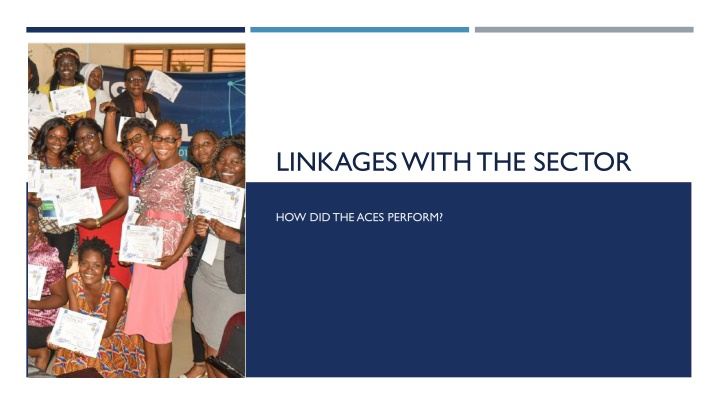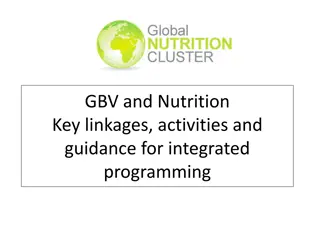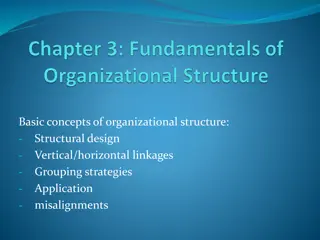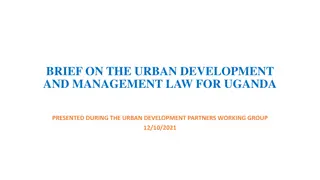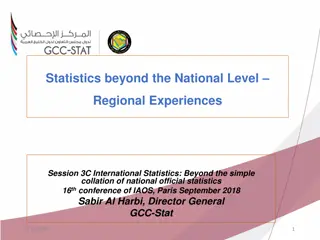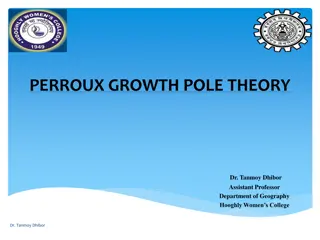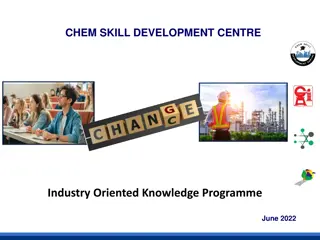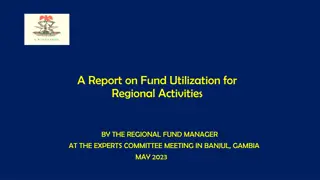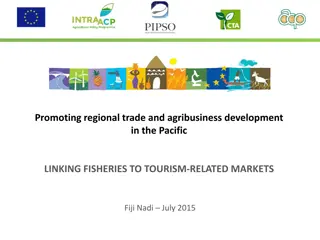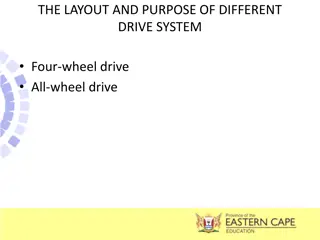Enhancing University-Industry Linkages to Drive Regional Development
The ACE Project focuses on creating linkages between universities and industry sectors to address regional challenges and enhance university capacities for quality training and applied research. By promoting regional specialization and providing benefits such as alternative funding channels, improved curricula, technology-oriented training programs, and cutting-edge equipment, the project aims to foster technical advancements and contribute to economic development. Key results include significant revenue generation, a high number of internships in private institutions, and a focus on training students and faculty in short-term courses.
Download Presentation

Please find below an Image/Link to download the presentation.
The content on the website is provided AS IS for your information and personal use only. It may not be sold, licensed, or shared on other websites without obtaining consent from the author.If you encounter any issues during the download, it is possible that the publisher has removed the file from their server.
You are allowed to download the files provided on this website for personal or commercial use, subject to the condition that they are used lawfully. All files are the property of their respective owners.
The content on the website is provided AS IS for your information and personal use only. It may not be sold, licensed, or shared on other websites without obtaining consent from the author.
E N D
Presentation Transcript
LINKAGES WITH THE SECTOR HOW DID THE ACES PERFORM?
LINKAGES WITH THE SECTOR Project participating universities in areas that address regional challenges and strengthen the capacities of these universities to deliver quality training and applied research. The centers were selected based on their ability to implement a proposal that encompasses an element around the building and use of industry/sector partnerships to enhance impact of the Center on development and increase relevance of the centers education and research. Linkages with industry/sector includes (i) the curricula boards that include industry professionals; (ii) innovation/incubator hubs at the university; (iii) direct partnership with industry for applied research and trainings; etc. The ACE Project includes three indicators used to measure university-industry linkages: (1) internships; (2) revenue generation; and (3) short-term courses. Development Objective: to promote regional specialization among
BENEFITS OF LINKING TO THE SECTOR Linkages with the sector can: Provide alternative access to funding channels Increase the impact and the relevance of university/center research, thereby contributing to the role of universities as problem-solvers Help develop better curricula and training in technology-oriented programs and enhance employment prospects for students that are integrated within the industry Help universities/centers acquire cutting-edge equipment that they would not otherwise acquire Provide research and technical know-how to the industry The innovation and the research environment generated by the collaboration of both parties can bring about technical advance.
KEY RESULTS 5,689 15,958 $52,423,100 Revenue generated externally Internships undertaken by faculty and students in the region and internationally Students and faculty trained in short-term courses 65% 1 student/faculty out of 3 Trained in short-term courses was from outside the host country 12% of internships conducted* took place in the private sector Share of regional students and faculty undertaking internships under ACE * the figure is computed from an analysis of results reported per center in 2017, 2018 and 2019.
KEY RESULTS: INTERNSHIPS In Agriculture, 9 internships out of 10 were undertaken in a private institution Internships took place in private farms, ministries, and weather forecast centers. Examples include Agudu Farms, the legacy improvement crop center, Sodexam, la Soci t de D veloppement des For ts, etc. In Health centers, Almost half of all internships were conducted in a private institution. Most internships took place in private and public hospital, medical centers, pharmaceutical companies, veterinary centers and Ministries. Examples include Jos University Hospitals, ECWA Pharmaceutical Pharmacy, the Ministry of Youth and Social Development, etc.
KEY RESULTS: INTERNSHIPS In STEM centers: Two thirds of internships took place in a private institution, Such as telecommunication firms, engineering and transport firms, statistics labs, banks, agribusiness industries and Ministries. Examples include SENELEC, Atos, Bollor , Benin Telecom Services, BCEAO, le Minist re de la Femme et de l Enfant de C te d Ivoire, Shell, le Minist re des Ressources Animales et Halieutiques du B nin, la Direction des Mines et de la G ologie de C te d Ivoire, etc. Top performing centers Winning strategies Challenges encountered Good planning and work to build relationships with industry leaders Stipends to support interns Learning curve to work outside traditional mechanisms Non-eligibility of research centers Limited focused industries in certain areas Inexistent channels to place students in internships in past curricula ACEPRD, CERSA, CEA-MEM, 2iE, OAU-OAK, CEA-SMA KNUST, CEFTER,
KEY RESULTS: INTERNSHIPS # of internships # of internships (regional) 6 30 110 40 87 28 9 99 14 18 Percentage of regional internships 1% 6% 23% 9% 22% 7% 2% 28% 6% 7% Gains (in SDR) DLI achievement rate ACEPRD580 KNUST531 CERSA474 CEA-MEM440 2iE394 OAU-OAK376 CEFTER365 CEA-SMA354 CEA-MITIC253 DRYLAND AGRIC CEFOR240 CETIC228 ENSEA219 TOTAL5,689 408,000 479,700 520,000 403,793 509,600 403,000 200,000 219,700 236,600 300,000 100% 92% 100% 100% 98% 76% 100% 41% 38% 100% 251 5 0 49 708 2% 0% 22% 12% 292,500 156,000 318,548 5,609,604 98% 100% 100%
KEY RESULTS: REVENUE GENERATION $7,000,000 $6,422,971 Academic exchange Programs; Scholarships; Research grants $6,000,000 Revenue from private industry; Research grants; Scholarships; Tuition fees $5,000,000 Research grants; Scholarships $4,000,000 $3,000,000 $1,946,260 $1,858,650 $2,000,000 $1,000,000 $0 North America Europe Africa Top performing centers Winning strategies Challenges encountered WACCI, ACEGID, 2iE, WACCBIP, PAMI, CEFOR Leadership and excellent grantsmanship; Excellent management of donor funds; Strong policy support from the University; Mechanisms for short-term courses; Money calls for money Misunderstanding over what counts as revenue generated designated account vs. university account Limited existing avenues to generate revenue
KEY RESULTS: REVENUE GENERATION ACE Revenue generated (USD) Gains (in SDR) DLI achievement rate WACCI ACEGID 8,667,359.26 7,760,340.12 5,522,281.93 4,993,742.63 4,462,927.81 4,017,272.00 2,929,332.26 2,592,318.29 2,155,123.73 1,796,932.27 1,532,400.00 1,508,730.00 1,033,526.00 52,423,100.82 780,000 1,540,000 780,000 780,000 760,000 466,900 780,000 254,285 750,000 721,443 220,795 790,000 780,000 13,399,021 100% 100% 100% 100% 100% 100% 100% 40% 100% 100% 97% 100% 100% 2iE WACCBIP PAMI CEFOR KNUST ACEPRD OAU-OAK PARK ENSEA CETIC CEA-SMA CERSA TOTAL
KEY RESULTS: SHORT-TERM COURSES Big Data Training for women in Benin Testimony: I find this course very important and useful to my research. ( ) My expectation is that I am going to achieve my goal of having in-depth knowledge in Big Data and Data science which will be very useful for me in finishing up my research. Top performing centers Winning strategies Challenges encountered Adapt and quickly change strategy; Strong communication strategy; Decentralized training/designation of focal points; and Building networks (alumni and regional relations) WACCI, CETIC, ACEPRD, CEFTER Governance issues around payment of trainers; Regionality
KEY RESULTS: SHORT-TERM COURSES Poultry science training in Cotonou Training of hundreds of farmers from several countries (Benin, Burkina Faso, Mali, Senegal and Togo) to poultry technique to produce quality chicken meat, eggs in large quantities. This contributes to increasing protein consumption in the framework of food security. animal Top performing centers Winning strategies Challenges encountered Adapt and quickly change strategy; Strong communication strategy; Decentralized training/designation of focal points; and Building networks (alumni and regional relations) WACCI, CETIC, ACEPRD, CEFTER Governance issues around payment of trainers; Regionality
KEY RESULTS: SHORT-TERM COURSES ACE Number of STC Number of STC (regional) 417 215 346 231 292 509 300 363 446 125 104 385 173 Percentage of regional STC 29% 16% 27% 21% 27% 51% 33% 40% 63% 18% 15% 59% 29% Gains (in SDR) DLI achievement rate WACCI 1,419 CETIC 1,379 ACEPRD 1,261 CEFTER 1,096 PAMI 1,078 OAU-OAK 1,007 CERSA 907 CEA-SMA 900 2iE 710 CEA-MITIC 704 KNUST 688 ACEGID 656 DRYLAND AGRIC TOTAL 15,958 260,000 234,000 380,000 425,000 250,000 250,000 260,000 270,000 260,000 204,750 260,000 200,000 150,000 100% 100% 100% 100% 100% 100% 100% 100% 100% 57% 100% 100% 100% 598 5,284 33% 4,451,888
LESSONS Winning strategies Adapt and quickly change strategy; Strong communication strategy; Decentralized training/designation of focal points; and Building networks (alumni and regional relations) Good planning and work to build relationships with industry leaders Stipends to support interns Challenges encountered Governance issues around payment of trainers; Adopt the regionality requirements Short-term courses Internships Non-eligibility of research centers as institutions Paucity of focused industries in certain areas Inexistent channels to place students in internships in past curricula Revenue generation Leadership and excellent grantsmanship; Excellent management of donor funds; Strong policy support from the University Mechanisms for short-term courses Money calls for money Misunderstanding over what counts as revenue generated designated account vs. university account No mechanisms in place for revenue generation at the beginning of the project
